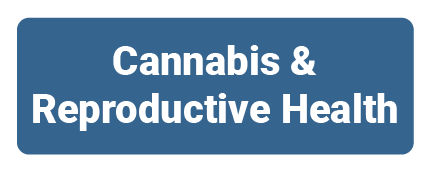Cannabis Harm Reduction:
Screening Guidelines
Let’s Talk About: CANNABIS
This section will dive into the fundamental elements involved in creating a communication strategy for health practitioners and their patients.
Key Elements of a Communication Strategy
Be Straightforward:
Try not to ask in a way that implies judgment, “you don’t smoke cannabis, right?”
Make it Routine:
Try to make it a routine to ask patients about cannabis use (as is done for alcohol or cigarettes) and let the patient know that you ask all your patients the same questions.
Assess Motivations:
Try to ask the patient how cannabis fits in their life and what effects they’ve noticed, good or bad. It will help identify the motivations for why they use cannabis, and then you can tailor harm reduction information to share with the patients.
Ask Permission:
Keep away from lecturing patients about risks of cannabis use. Making a habit of asking for permission before sharing the information helps build rapport with the patient and makes them feel involved in the conversation.
Respect “No”:
Assess Existing Knowledge:
Gently Correct Misunderstandings:
If a patient says something that is incorrect, it is a good opportunity for the doctor to correct that misconception and further educate the patient. 43
Combine Communicating Risks and Harm Reduction:
Validation:
Let them know that you understand their world may be surrounded by opportunities and people who smoke cannabis, and this may create a desire/pressure for them to try it.
There is considerable misinformation surrounding cannabis use, so it is important to reassure patients that you understand this and aim to provide them with accurate information to help them make informed decisions.
Acknowledging Limitations in Knowledge:
-
– Acknowledge that our understanding of health impacts is incomplete and that there are limits to the evidence we currently have
– Acknowledging uncertainty increases the likelihood that people will pay attention and trust future messaging
– In light of this uncertainty, it is advisable for patients to exercise caution with their cannabis use and refrain from using it indiscriminately, assuming it to be harmless.
Avoid Stigmatizing Words:
Avoid Judgmental Phrases:
Phrases such as “just in case…,” or “good to hear you’re not using cannabis” when a teen denies using cannabis. This makes it appear that you see cannabis users as bad and makes them less open to talk to you in the future about cannabis.
Refer to Resources:
Refer to resources so that the patient can learn more about cannabis harm reduction, such as NB Lung’s website.
Be Straightforward:
Try not to ask in a way that implies judgment, “you don’t smoke cannabis, right?”
Make it Routine:
Try to make it a routine to ask patients about cannabis use (as is done for alcohol or cigarettes) and let the patient know that you ask all your patients the same questions.
Assess Motivations:
Try to ask the patient how cannabis fits in their life and what effects they’ve noticed, good or bad. It will help identify the motivations for why they use cannabis, and then you can tailor harm reduction information to share with the patients.
Ask Permission:
Keep away from lecturing patients about risks of cannabis use. Making a habit of asking for permission before sharing the information helps build rapport with the patient and makes them feel involved in the conversation.
Respect “No”:
Assess Existing Knowledge:
Gently Correct Misunderstandings:
If a patient says something that is incorrect, it is a good opportunity for the doctor to correct that misconception and further educate the patient. 43
Combine Communicating Risks and Harm Reduction:
Validation:
Let them know that you understand their world may be surrounded by opportunities and people who smoke cannabis, and this may create a desire/pressure for them to try it.
There is considerable misinformation surrounding cannabis use, so it is important to reassure patients that you understand this and aim to provide them with accurate information to help them make informed decisions.
Acknowledging Limitations in Knowledge:
-
– Acknowledge that our understanding of health impacts is incomplete and that there are limits to the evidence we currently have
– Acknowledging uncertainty increases the likelihood that people will pay attention and trust future messaging
– In light of this uncertainty, it is advisable for patients to exercise caution with their cannabis use and refrain from using it indiscriminately, assuming it to be harmless.
Avoid Stigmatizing Words:
Avoid Judgmental Phrases:
Phrases such as “just in case…,” or “good to hear you’re not using cannabis” when a teen denies using cannabis. This makes it appear that you see cannabis users as bad and makes them less open to talk to you in the future about cannabis.
Refer to Resources:
Refer to resources so that the patient can learn more about cannabis harm reduction, such as NB Lung’s website.
Cannabis Harm Reduction Screening Guideline
Discussing cannabis with patients can be challenging, the misconceptions surrounding its use, combined with a lack of knowledge and research can make these conversations feel uncomfortable for many healthcare professionals.
In this section, we will demonstrate how a healthcare provider can have a confident, compassionate conversation with patient in different demographics about cannabis—clear, informative, and free of judgment.
Let’s talk cannabis.
Key Risks
General / Adult
- Smoking is the most harmful way to use cannabis, it harms the lungs, exacerbates respiratory comorbidities and increases the risk of additional respiratory concerns. (27, 28, 29 30, 34)
- Impair one’s ability to drive safely or operate equipment. (10,11,12, 56)
- The correlation between cannabis use and mental health consequences is moderate to significant. Regular and continuous cannabis use over time has been associated with an increased likelihood of experiencing anxiety, depression, psychosis, and schizophrenia. (13, 14, 15, 56)
- Cardiovascular and Pulmonary risks: if the patient has cardiovascular risk factors, using smoked cannabis could lead to elevated risk of stroke or adverse events. (16,17, 31,32, 56)
- Possible Drug interactions: People new to taking daily medications may not know that cannabis can interact with their medications, or how they may interact. (Cannabis Interactions Checker – Drugs.com) (5, 56)
- Males: Poor sperm morphology and quality, lower sperm count, and higher rates of erectile dysfunction. (65, 52, 60)
- Men’s cannabis use during conception may negatively affect the fetus and child, though research is ongoing. (51, 52)
- Parents: Reduced ability to pay attention and react quickly. This can affect one’s ability to parent as they might miss signs of danger, cues for hunger, desire of the child to play, and impact overall parent-child interactions and attachments. (18, 19)
- Children can mistake edible forms of cannabis for regular food or candy. Don’t leave products in areas that are easy to access, like countertops, cupboards, purses. Keep edibles in place out of reach and locked up so children do not accidently consume and overdose on cannabis.(20,21, 3)
Pregnant Person Population
- Harm to female reproductive organs and early childhood development (8, 46, 47, 48, 56, 64)
- Low birth weight, preterm labour, effects on short- and long-term development. (22, 8, 46, 56, 57, 58)
- THC has been shown to disturb important reproductive events. It can cross the placenta and impact fetal development and can also pass through breastmilk. (23, 51, 58, 55)
- Exposure to THC in utero (in the womb) can have a negative impact on the fetus’ brain development. It can interrupt the fetus’ normal brain maturation, and it can also put the fetus at higher risk of developing neurocognitive impairments and neuropsychiatric disorders later in life. (23, 46, 56, 57, 57)
- Breast feeding (46, 45, 55, 59, 61)
- There is still growing but insufficient evidence for an association between cannabis use during lactation and health outcomes for the infant
- The safest option is to not use cannabis during lactation due to potential risks (57)
- Parenting: Reduced ability to pay attention and react quickly. This can affect one’s ability to parent as they might miss signs of danger, cues for hunger, desire of the child to play, and impact overall parent-child interactions and attachments. (18,19)
- Children can mistake edible forms of cannabis for regular food or candy. Don’t leave products in areas that are easy to access, like countertops, cupboards, purses. Keep edibles in place out of reach and locked up so children do not accidently consume and overdose on cannabis. (20,21)
Teen Population
- Smoking cannabis can harm developing lungs
- The developing brain is vulnerable to negative impact (1, 56)
- Cognitive functioning and academic performance are impacted: Impaired memory, attention and learning (2,3, 56)
- Impaired coordination, decision-making and slowed reaction times:
- While all teens may not be driving, many do still use scooters, bikes, and skateboards. Or they may be in cars with older teens who may be driving them. (4, 56)
- Possible Drug interactions: Teens who are relatively new to taking daily medications may not know that cannabis can interact with their medications, or how they may interact. Some may even be using cannabis to self-medicate (Cannabis Interactions Checker – Drugs.com) (5, 56)
Older Adult Population (50+)
- Lowered gait velocity (slower walk) and impaired motor skills increase the risks of falls and injuries. (30, 56)
- Cannabis can have harmful effects on the cardiovascular and pulmonary systems, especially when consumed by inhalation. (16, 17, 31, 32, 56)
- The correlation between cannabis use and mental health consequences, including suicidal ideation, depression, and psychological distress, is especially significant in individuals with a genetic predisposition to mental health issues (33, 34, 35, 56)
- Possible Drug interactions with medications they may be taking (Cannabis Interactions Checker – Drugs.com). But if they have been using cannabis for long, they may know how cannabis interacts with their medications. (5, 36, 37, 56)
Conversation Strategies
General / Adult
- Be straightforward and ask directly about cannabis use, as you would ask about a patient’s alcohol use (56)
- Motivations: try to ask the patient how cannabis fits in their life and what effects they’ve noticed, good or bad.
- Assess existing knowledge: ask the patient what they already know about the negative effects of cannabis, this saves time because the patient might already know a lot of the things that the HCP was going to inform them about. Also, if a patient says something that is actually incorrect, it is a good opportunity for the doctor to correct that misconception and further educate the patient. Make sure to do it in a validating rather than demeaning fashion – “I can see why it might feel this way, and, research suggests X, Y, Z”
- Combine risks and harm reduction: giving a long list of risks and harms to a patient increases the likelihood that they will panic and not want to continue the discussion to harm reduction. Try to combine communicating risks and harm reduction practices at the same time.
- Gently correct misunderstandings: if a patient says something incorrect, it is an opportunity to educate the patient
- Validation: the world is filled with misinformation about cannabis and opportunities to use, creating a pressure/desire to try it
Pregnant Person Population
- We know that cannabis is harmful to the developing brain up until the age of 25. Considering this it is safer to assume that cannabis use during pregnancy may not be safe for the developing baby.(24)
- Prenatal visits: The person may come in for their prenatal visit with their other children present and may feel uncomfortable discussing cannabis use in front of them.
- Acknowledge lack of research: research on how cannabis impacts pregnancy/breastfeeding and the baby’s health is still new and growing. It’s best practice to suggest no use of cannabis when pregnant or breastfeeding as we still do not fully know how it impacts the baby. (25,26, 43, 57)
- In the attempt to study how cannabis impacts pregnancy, it has been difficult for studies to isolate cannabis’ effects from other confounding factors, such as concurrent alcohol or tobacco use. (28, 29, 58)
- Perceptions of Cannabis: Many women use cannabis during pregnancy, believing it alleviates certain symptoms or considering it a more natural and safer alternative to other medications. Some may also use it as a harm reduction strategy to avoid other substances. (27)
- Harm Reduction: In cases where the woman does wish to continue cannabis use, focus on providing harm reduction strategies. It is important to emphasize the need to avoid high-THC cannabis, limit use to as infrequent as possible, and stick to low doses whenever feasible. (25, 57)
Teen Population
- Short and Sweet: Teenagers have a lower attention span and desire to listen to advice, so try to convey 2-3 main risks and harm reduction practices they can follow
- Communication of Rights: It’s important to inform teens that doctor-patient confidentiality protects what they share, and we can’t tell their parents unless there’s immediate danger (e.g., suicidal intent or violence). We need to clarify what constitutes ‘immediate danger’ to avoid confusion, like smoking, which isn’t reportable. This reassurance encourages honest conversations.
- “NO”: Respect older teens when they say “no”. You can try to refer to NB Lung website – “I understand, it’s okay that you don’t want to talk, here’s a website if you want to look at the information yourself”
- Facts not emotion: Fear-based messaging will not resonate with youth. Ensure that the information you provide is meaningful and rooted in fact, not emotion.
- Ask open-ended questions: this encourages two-way conversation and does not discount the teen’s life experiences.
- Be their library: Point them to resources to learn about cannabis use showing risk factors for youth, as well as harm reduction strategies.
Older Adult Population (50+)
- Cannabis use among older adults is increasing. (53)
- Changes in body fat and muscle mass as one ages may affect how cannabis is processed by the body. (40)
- Perceptions of cannabis: Many older adults may be avoiding the use of opioids for pain and instead choose to use cannabis for pain management because they are led to believe that it is natural, organic and not harmful. (38, 39)
- Stigma around cannabis use: There is a significant stigma surrounding the use of cannabis and other substances in the older adult population; therefore, its important to approach this topic with sensitivity and consideration. (41, 42)
- Ask permission: due to potential stigma older adults may be hesitant to discuss cannabis use, so its important to ask permission and ensure they’re comfortable before starting the conversation. (41, 42)
- Acknowledge limitation in research: research is still in the process to fully understand the interaction of cannabis with other drugs
Let’s look at some
Patient Concerns
|
Patient’s Concern: |
Health Care Practitioner: |
| “Can we stop talking about cannabis” | “That’s okay, we don’t have to talk right now. If you want to learn about it on your own, NB Lung has information on it on their website” |
| “No, I don’t use cannabis at all okay! Can we stop talking about this?!” | “I do not have massive opinions on this front, I will not judge you, I just want to look out for you, and I can’t do that if I don’t understand all aspects of your health” |
| “Cannabis is a safe. It’s not as bad as alcohol or cigarettes” | “I hear you, but over the last few years with research our views on cannabis have changed, so let us see what some safer ways there are to consume it” OR |
| “Well, there are still safer and less-safe ways to consume cannabis” | |
| “Cannabis is a plant; it won’t interact with my medications” | “I understand that it tends to be presented in that way, but cannabis is a drug much like any other medication you may be taking, and it has possible interactions with them” |
| “I’m currently consuming about _____ of cannabis a day” | “Okay currently you’re using ___ amount of cannabis, okay can we maybe consider a switch down on dosage? or use oils instead? because I am worried about your lungs” |
| “I don’t want to quit consuming cannabis, it is the only thing that I feel comfortable with right now” | “Hey, if that’s something you want to continue to do, then can we consider reducing the frequency or doses you consume it in. Some people also use sublingual oils which have a similar onset time as smoking cannabis, but its less harmful as there is no smoke going into your lungs” |
| TEEN Patient “Honestly, it (cannabis) kind of makes me a bit lazy, but I feel good when I’m with friends. It helps me chill out.” |
“I hear you; it helps you relax. While that’s true in the moment, cannabis use might make you feel less relaxed in the long-term. Because your brain is still developing, smoking will impact your brain more than it would for adults in your life. |
NB Lung has been helping New Brunswickers breathe easier since 1933.
Thank you for your support!
Page Last Updated: 28/02/2023




